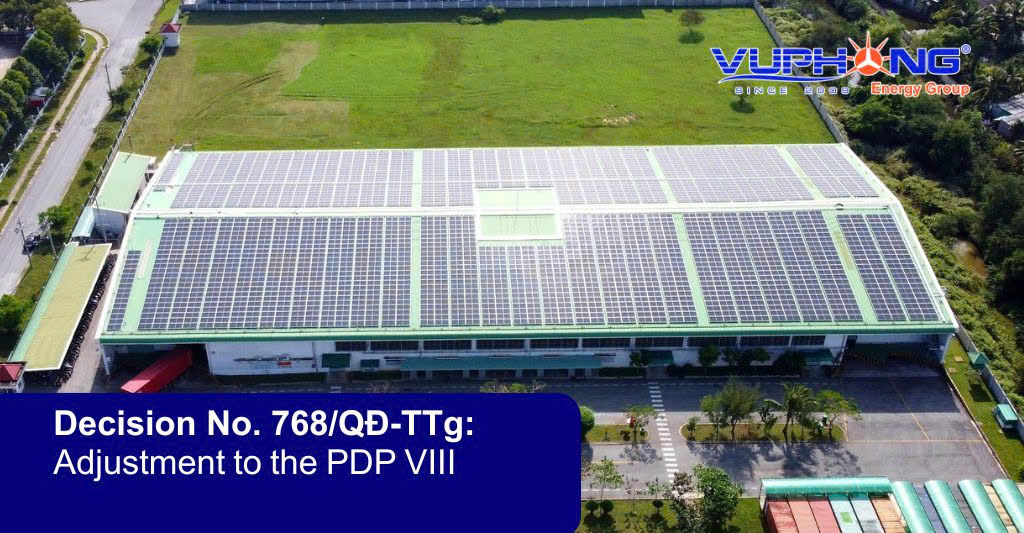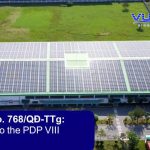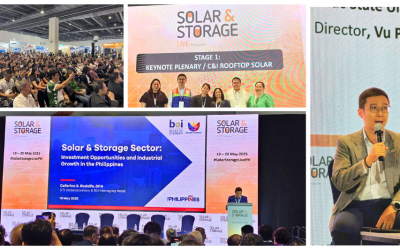
On April 15, 2025, Deputy Prime Minister Bui Thanh Son signed Decision No. 768/QĐ-TTg, approving adjustments to Vietnam’s National Power Development Plan for the period 2021–2030, with a vision to 2050 (PDP VIII).
Key development perspectives
The adjusted PDP VIII outlines five core development perspectives:
- Electricity as a pivotal infrastructure sector: Recognizing electricity as a critical infrastructure, the plan emphasizes its development as a foundation for rapid and sustainable national growth, contributing to an independent and self-reliant economy, improved living standards, and strengthened national defense and security.
- Comprehensive optimization across the power sector: The plan advocates for an integrated approach, optimizing from power generation, transmission, and distribution to efficient and economical electricity usage, while ensuring resource conservation, environmental protection, and a transition to a sustainable energy model.
- Scientific and dynamic planning: Emphasizing a science-based, flexible, and open planning approach, the plan promotes effective utilization of domestic energy resources, prudent import strategies, and prioritization of renewable and new energy sources to foster a sustainable energy industry ecosystem.
- Encouraging diverse economic participation: The plan encourages investment from various economic sectors, promoting rapid development of the power industry under fair competition principles, operating within a market-based electricity pricing mechanism that balances the interests of investors, consumers, and society.
- Alignment with global technological trends: The plan aligns with global advancements, particularly in renewable and new energy technologies, supporting the transition to a green, circular, and low-carbon economy. It underscores the importance of a just, sustainable energy transition in line with international trends.
The overarching goal is to ensure robust national energy security, meeting the demands of socio-economic development and industrialization. Concurrently, the plan aims to successfully implement a just energy transition, develop smart grids, enhance power system management, and gradually establish a modern energy industry ecosystem based on renewable and new energy sources, aligning with global green development and emission reduction trends.
Toward 2050: Renewable energy to account for 74–75% of the energy mix
Regarding national energy security, the adjusted PDP VIII sets the objective of fully meeting domestic electricity demand to support socio-economic development. From 2026–2030, average annual GDP growth is projected at approximately 10.0%, and around 7.5% for the period 2031–2050. Commercial electricity output is projected to reach approximately 500.4–557.8 billion kWh by 2030, and around 1,237.7–1,375.1 billion kWh by 2050. Total electricity generation and imports are estimated at 560.4–624.6 billion kWh in 2030, increasing to about 1,360.1–1,511.1 billion kWh by 2050. Peak load capacity is forecast to reach 89,655–99,934 MW by 2030 and 205,732–228,570 MW by 2050.
The plan also emphasizes the development of distributed solar power. By 2030, 50% of office buildings and 50% of households are expected to utilize rooftop solar systems for self-production and self-consumption (not feeding into the national grid).
As for total solar power capacity, including both centralized and rooftop systems (excluding certain types as defined in Clause 5, Article 10 of the Electricity Law No. 61/2024/QH15), it is projected to reach between 46,459 and 73,416 MW—accounting for approximately 25.3% to 31.1% of total installed capacity.
For more details on Decision No. 768/QĐ-TTg (in Vietnamese), please click here.









